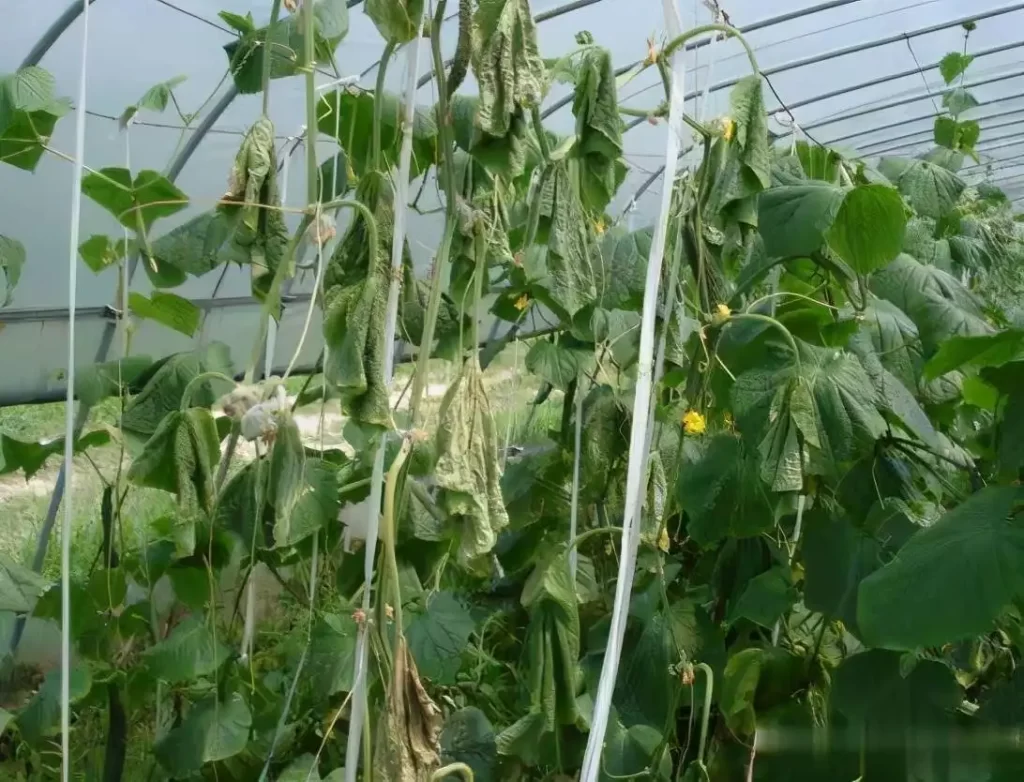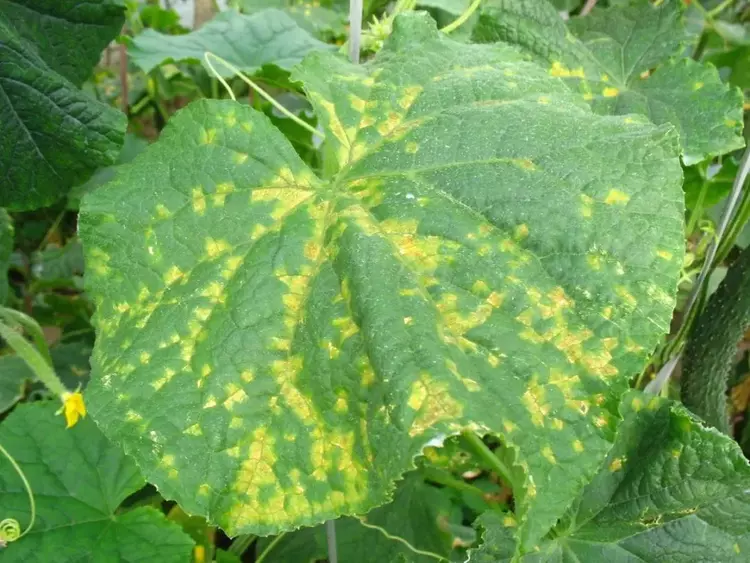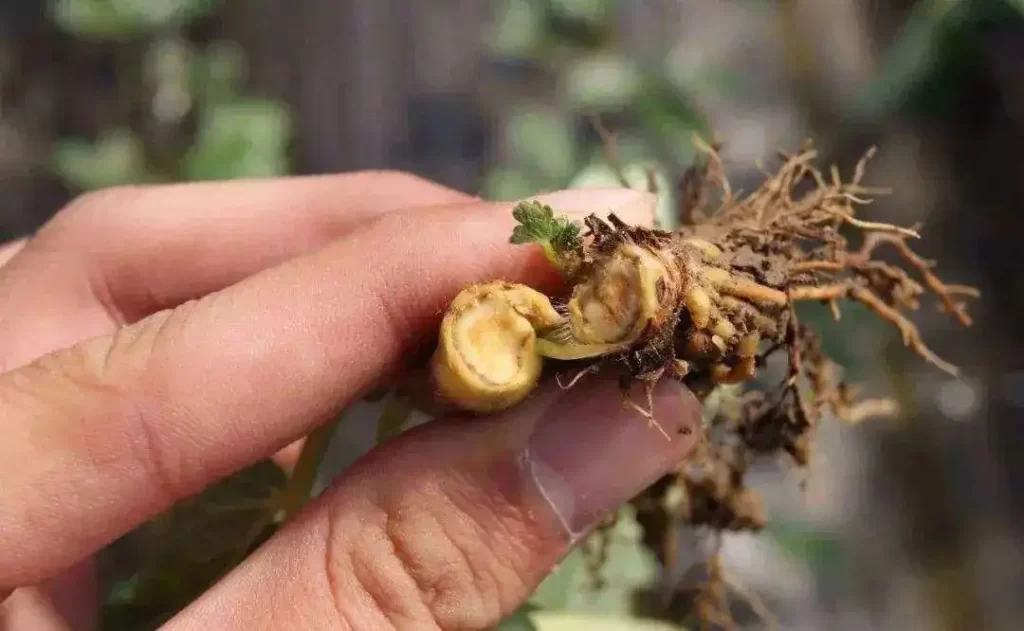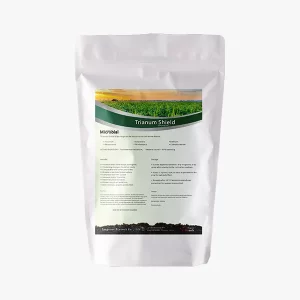Despite the fact that there are numerous factors that might lead to cucumber plants wilting and dry out, germs and pests are always the main problems for plant species.
Under the appropriate circumstances, cucurbit plants will grow swiftly. The size can vary from day to day depending on your conditions and how you water them.
Around 1-1.5 inches of water must be provided weekly for the average cucumber for it to grow. Rain can accomplish this, but if the dryness is too acute, you may need to water the plants more frequently.
Moisture in the soil is ideal. Also, by reducing evaporation and better keeping the water, a covering of mulch for row cover will maintain the moisture for longer. It’s also crucial to keep in mind that the soil must remain moist throughout the developing process, so offer adequate water.
Never give your plants too much water, remember. Without doing this, you risk damaging the plant’s root system and impairing its ability to absorb oxygen and nutrient-rich water.
As with plants that receive insufficient water, overwatered plants will dry out and die.
The preservation of the temperature is one of the most crucial elements in the growth of plants. You must make the necessary repairs if your plants are becoming too hot, chilly, or frozen. Insufficiently warm or cold soil, water, or air will weaken cucumbers. Before to that, it would be preferable if you altered their TEMP.
In order to shield cucumber plants from the cold and allow them to grow at the ideal temperatures, decorative fabric sheets are used to create a barrier between the plants.

Bacterial wilt, Phytophthora blight, and Fusarium wilt are a few diseases that could affect cucumber plants wilting. In this article, we describe wilt viruses, the syndromes they may produce, and how to avoid cucumber wilt.
When cucumber beetles feed, they transfer germs that can change the colour of plant leaves. Examples of this include spotted cucumber bugs and striped cucumber beetles. The leaves will turn a dingy shade of green and begin to wilt when they first touch. When the virus spreads over time, the plant will get ill.
Plants develop more quickly and aggressively in soils with higher phosphorus levels, while plants may die in soils with low phosphorus levels.

The disease is thought to be carried by the fungus. This illness may have killed a plant if it had yellow leaves and spots on its fruit, vines, and leaves that were rotting. The illness spreads rapidly and is even capable of killing healthy plants in your field or garden.
Pink Fusarium can still show up on vines, but it causes the leaves to develop yellow with rotting sores. Plants that have been infected by the fungus cannot be saved.
Fungi frequently cause great damage to land. When searching for cultivars, keep in mind that several only thrive on soil with mild diseases.
Growing in warm southern regions, spicy squash plants can have a wide range of harmful consequences on their environment. One of the earliest signs is drooping leaves. With lower leaves first and moving upward, there will be distinct places along the stem that wilted.

Cucumbers can suffer harm from insects in a variety of ways. Some of these involve consuming the plant’s leaves and fruits, puncturing it, or bringing bacteria from other plants to it. Squash bugs, cucumber beetles, aphids, and squash vine borers are a few typical pests that could harm it. By killing what’s left of the cucumber or severely harming it, these pests can cause it to wither slowly.
The roots of the nematodes are continuously updated by Cucumis sativus, which consumes them. These pests affect and first hinder the growth of the plants.
Luckily, a few organic treatments for cucumber wilt exist that can help manage pests and pathogens while preventing wilted cucumber plants.
One such treatment is a bacterial and fungal-based organic micro-based solution. This can aid in the management of pests like aphids and whiteflies as well as diseases like powdery and downy mildew. To treat wilted cucumber plant, just prepare the solution in accordance with the guidelines on the label and spray it on your cucumber plants as necessary.

Disease control management is another strategy for preventing wilting cucumber plants. To prevent illnesses, this entails using a fungicide or bactericide on a regular basis. To prevent causing harm to your plants, be sure to carefully follow the instructions on the product label.
Now that the technique has been compared, researchers can determine whether a particular strain of Trichoderma Harzianum is successful in treating wilted cucumber plant. The results of the experiment showed that the strain exhibited a number of desirable traits, including rapid growth, high spore output, broad action spectrum, and many more. As a result, the strain has a broad range of possible applications and can help in large-scale field scenarios by eradicating cucumber illnesses.
Finally, pest management can help stop cucumber plants from wilting. Many organic pesticides are available to help get rid of aphids and whiteflies if they are an issue in your area. Once more, make sure to carefully read the instructions on the product label in order to protect your plants.
While receiving therapy for cucumber plants wilting, we advise doing a number of crucial things.
Cutworms in gardens are a major menace to all..
As a farmer,I inspect my fields daily to monitor..
It all started with a worried farmer named Mr...

Leave a Reply